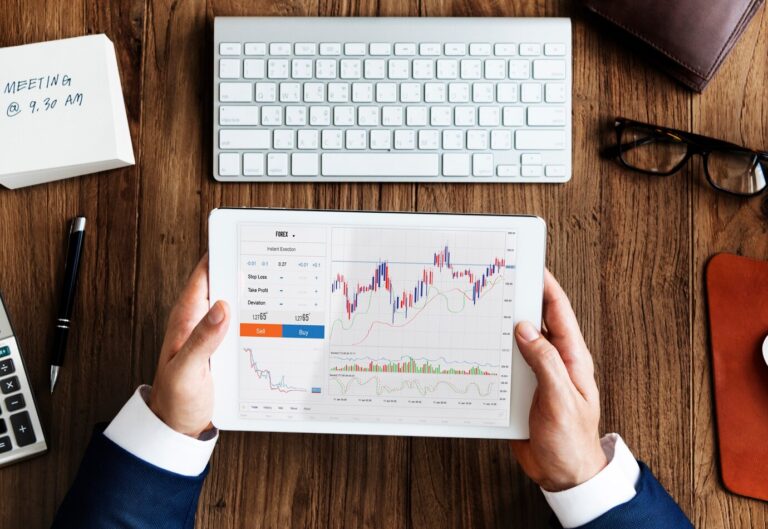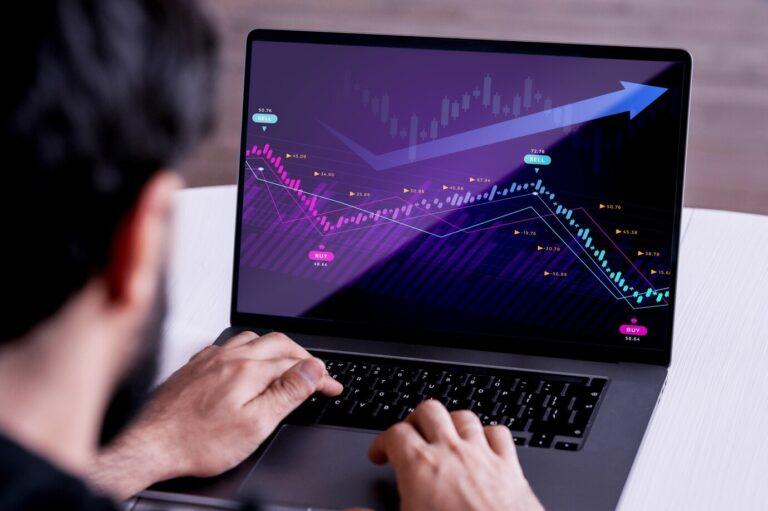The Impact of Geopolitical Events on Currency Pairs
The foreign exchange market (forex) is a complex and dynamic beast, swayed not just by economic data but also by the winds of global politics. From trade wars and diplomatic tensions to armed conflicts and natural disasters, geopolitical events can send shockwaves through currencies, causing them to appreciate, depreciate, or fluctuate wildly. Understanding how these events play out in the forex market is crucial for any trader, be it a seasoned veteran or a budding novice.
Geopolitical Events and Currency Markets
Geopolitical events encompass a broad spectrum of occurrences, ranging from political decisions and policy changes to international conflicts and diplomatic tensions. In the context of currency markets, these events can act as catalysts, sparking significant movements and fluctuations in currency pairs. Currencies are deeply intertwined with the economic and political landscapes of their respective nations, making them highly responsive to geopolitical shifts.
The relationship between geopolitical events and currency markets is often characterized by a cause-and-effect dynamic. For example, a sudden change in government leadership or a major policy announcement can create uncertainty and volatility in the foreign exchange (forex) market. Traders and investors react to these events by adjusting their positions, leading to rapid and sometimes dramatic price movements in currency pairs.
Moreover, geopolitical events can influence market sentiment and perception of risk. Investors tend to seek safe-haven currencies, such as the U.S. Dollar (USD) or the Swiss Franc (CHF), during times of geopolitical turmoil, causing these currencies to appreciate. Conversely, currencies associated with nations facing heightened geopolitical risk may experience depreciation as investors move their capital to more stable assets.
Case Studies
To delve deeper into the impact of geopolitical events on currency pairs, examining specific case studies provides valuable insights into the intricate relationships at play. Two prominent examples are the Brexit referendum and the U.S.-China trade tensions.
Brexit Referendum
The United Kingdom’s decision to leave the European Union, as determined by the 2016 Brexit referendum, had profound effects on the British Pound (GBP) and other related currencies. As uncertainty loomed over the outcome, the GBP experienced heightened volatility. Following the referendum, negotiations and developments surrounding the terms of the UK’s departure continued to influence currency values. The fluctuating nature of GBP during this period underscored how geopolitical events can trigger prolonged and impactful movements in currency pairs.
U.S.-China Trade Tensions
The trade tensions between the United States and China have been a persistent geopolitical theme, impacting the valuation of the U.S. Dollar (USD) and the Chinese Yuan (CNY). Tariffs, policy announcements, and the overall trade dispute have led to fluctuations in both currencies. For instance, the imposition of tariffs on Chinese goods by the U.S. resulted in periods of USD appreciation, reflecting the perceived strength of the U.S. economy amid the trade tensions. These case studies highlight the intricate ways in which geopolitical events can shape currency pair dynamics.
Impact of Geopolitical Events on Currency Pairs
| Geopolitical Event | Currency Pair Affected | Direction of Impact |
| Brexit Referendum | GBP/USD, EUR/GBP | GBP – Volatility, EUR, Varied Responses |
| U.S.-China Trade Tensions | USD/CNY | USD – Appreciation, CNY – Depreciation |
The table summarizes the impact of specific geopolitical events on relevant currency pairs. In the case of the Brexit referendum, the GBP/USD pair experienced heightened volatility, while the EUR/GBP pair showed varied responses. In the context of U.S.-China trade tensions, the USD/CNY pair witnessed USD appreciation and CNY depreciation as a result of the trade dispute. These examples emphasize the importance of analyzing individual currency pairs to discern the nuanced responses to geopolitical events.
Risk Management Strategies
Effectively navigating the volatile terrain of currency markets amidst geopolitical events requires robust risk management strategies. Traders and investors must deploy a combination of proactive measures to safeguard their portfolios from potential adversities. Here are key risk management strategies:
- Diversification of Portfolios: Diversifying portfolios across different asset classes and currencies is a fundamental risk management practice. By spreading investments, traders reduce exposure to the impact of a single geopolitical event on a specific currency pair. This strategy aims to mitigate potential losses by ensuring that the performance of one asset does not overly influence the entire portfolio.
- Setting Stop-Loss Orders: Implementing stop-loss orders is a tactical approach to limit potential losses. Traders predefine a price level at which their positions automatically liquidate, helping to prevent substantial financial setbacks during sudden and adverse market movements triggered by geopolitical events.
- Hedging Instruments: Utilizing hedging instruments, such as options or futures contracts, can act as a financial safeguard against currency fluctuations. Hedging allows traders to offset potential losses in one position with gains in another, providing a level of protection when uncertainty prevails in the market.
- Technical Analysis and Fundamental Analysis: Combining technical analysis, which involves studying historical price patterns and market indicators, with fundamental analysis, focusing on economic and geopolitical factors, enables traders to make informed decisions. By understanding both the technical and fundamental aspects, traders can better anticipate potential market movements and adjust their strategies accordingly.
- Regular Monitoring and Adjustments: Staying vigilant and continuously monitoring geopolitical developments is crucial for effective risk management. Traders should be prepared to adjust their positions in response to changing circumstances. Regularly updating risk assessments ensures that portfolios remain aligned with evolving market conditions.
In summary, risk management is a dynamic process that involves a combination of strategic planning and adaptability. By diversifying portfolios, setting stop-loss orders, utilizing hedging instruments, combining technical and fundamental analyses, and staying vigilant, traders enhance their ability to weather the impact of geopolitical events on currency pairs. These risk management strategies form a comprehensive toolkit for market participants seeking to navigate the unpredictable nature of the forex market.Начало формы
Technology and Information
The advent of technology has revolutionized the landscape of currency markets, reshaping the way information is disseminated, processed, and acted upon. In the context of geopolitical events, technology plays a pivotal role in influencing currency pairs. Here’s a detailed exploration of the intersection between technology, information, and currency markets:
- Real-Time News Feeds: Real-time news feeds have become indispensable tools for traders. Advanced algorithms scour news sources for relevant geopolitical information, instantly delivering updates that can impact currency pairs. Traders who leverage real-time news feeds gain a competitive edge by quickly incorporating breaking news into their decision-making processes.
- Algorithmic Trading: Algorithmic trading, powered by complex algorithms and artificial intelligence, has transformed the forex market. Algorithms can automatically execute trades based on predefined criteria, including responses to geopolitical events. While algorithmic trading enhances efficiency, it also poses challenges as rapid, algorithm-driven market movements can contribute to increased volatility.
- Analytics Platforms: Sophisticated analytics platforms empower traders with in-depth insights into market trends and patterns. These platforms use data analysis, machine learning, and statistical modeling to provide comprehensive perspectives on currency pair movements. Traders can use these insights to make informed decisions in response to geopolitical events.
- Social Media and Sentiment Analysis: Social media platforms have become influential sources of information and market sentiment. Traders often monitor social media channels to gauge public sentiment regarding geopolitical events. Sentiment analysis tools process vast amounts of social media data to provide insights into market sentiment, helping traders anticipate potential shifts in currency pairs.
- Blockchain and Cryptocurrencies: The rise of blockchain technology and cryptocurrencies introduces new dynamics to currency markets. Cryptocurrencies, such as Bitcoin, are influenced by geopolitical events but operate independently of traditional financial systems. Traders may turn to cryptocurrencies as alternative investments during periods of geopolitical uncertainty.
- Risk Management Software: Specialized risk management software assists traders in assessing and managing risks associated with geopolitical events. These tools often integrate real-time data feeds, analytics, and risk assessment modules to provide a comprehensive view of portfolio exposure. Traders can use such software to simulate and evaluate potential outcomes based on different geopolitical scenarios.
In essence, technology has become a driving force shaping the information landscape and trading strategies in currency markets. Traders who harness the power of advanced technologies gain a competitive advantage in responding to geopolitical events swiftly and effectively. However, it’s essential to strike a balance, as overreliance on technology may amplify market dynamics and contribute to increased volatility during critical geopolitical junctures.





